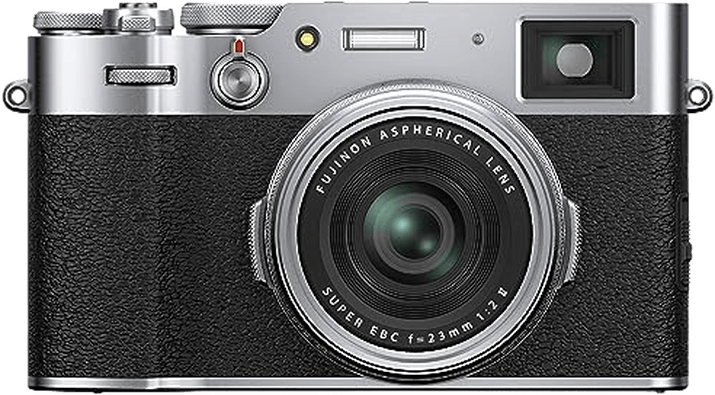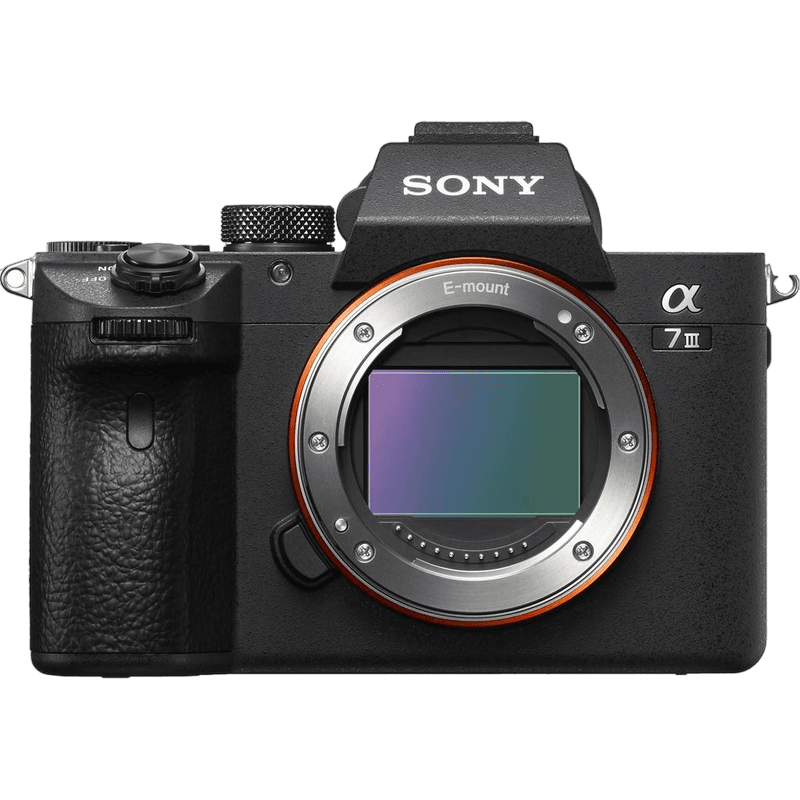Fujifilm X100V vs Sony a7 III Comparison
Fujifilm X100V

Sony a7 III

The Sony a7 III outperforms the Fujifilm X100V with a score of 80/100 compared to 69/100. Both mirrorless cameras share similarities, such as their release years in the 2010s, with the X100V in 2020 and the a7 III in 2018. Additionally, their sizes are quite comparable, with only slight differences in dimensions.
The Sony a7 III excels in performance, justifying its higher launch price of $2000 compared to the X100V’s $1399. However, the Fujifilm X100V has the advantage of being lighter, weighing 478g versus the a7 III’s 650g. This makes the X100V more portable and convenient for travel and everyday use.
Taking these factors into account, the Sony a7 III offers superior performance, while the Fujifilm X100V provides a more lightweight and compact option. Ultimately, the choice depends on the photographer’s priorities and preferences.
Fujifilm X100V vs Sony a7 III Overview and Optics
The Sony a7 III emerges as the winner in the optics comparison, scoring 81 out of 100, while the Fujifilm X100V scores 66. Both cameras share some specifications, including a CMOS sensor and similar shooting speeds, with the Fujifilm X100V at 11 fps and the Sony a7 III at 10 fps.
The Sony a7 III outperforms the Fujifilm X100V in various aspects. It has a full-frame sensor, which offers better image quality and low-light performance compared to the Fujifilm X100V’s APS-C sensor. The Sony a7 III’s sensor also has a DXOMARK score of 96, indicating its superior performance, while the Fujifilm X100V does not have a DXOMARK score. Additionally, the Sony a7 III has image stabilization, which helps reduce camera shake and improve image sharpness. The camera also features a Sony FE lens mount, allowing users to change lenses and adapt to various photography needs.
However, the Fujifilm X100V has its advantages. It has a slightly higher megapixel count at 26, compared to the Sony a7 III’s 24.2 megapixels, which allows for more detailed images. The Fujifilm X100V also has a faster shooting speed, capturing 11 frames per second compared to the Sony a7 III’s 10 fps.
Considering these points, the Sony a7 III is the better camera in terms of optics, with its full-frame sensor, image stabilization, and lens versatility. The Fujifilm X100V, on the other hand, offers a higher megapixel count and faster shooting speed, which may appeal to some photographers. Ultimately, the choice between these cameras depends on the individual’s priorities and preferences.
Fujifilm X100V vs Sony a7 III Video Performance
The Fujifilm X100V outperforms the Sony a7 III in video capabilities, with a video score of 91/100 compared to the Sony’s 56/100. Both cameras share 4K video resolution, but the Fujifilm X100V has the edge with a higher maximum video dimension of 4096 x 2160, whereas the Sony a7 III has a maximum video dimension of 3840 x 2160.
One significant advantage of the Fujifilm X100V is its maximum video frame rate of 120fps, which is far superior to the Sony a7 III’s 30fps. This higher frame rate allows for smoother and more detailed slow-motion footage. Additionally, the Fujifilm X100V has built-in time-lapse functionality, a feature the Sony a7 III lacks. This makes the X100V more versatile for capturing dynamic and creative video content.
While the Sony a7 III falls short in some areas, it still delivers 4K video resolution, making it suitable for high-quality video projects. However, its lower video score and lack of features like higher frame rates and built-in time-lapse functionality make it less competitive compared to the Fujifilm X100V.
Considering these factors, the Fujifilm X100V is the clear winner in terms of video capabilities, offering higher maximum video dimensions, superior frame rates, and built-in time-lapse functionality. The Sony a7 III, while still capable of producing high-quality 4K video, lacks the advanced features and versatility found in the Fujifilm X100V.
Fujifilm X100V vs Sony a7 III Features and Benefits
The Fujifilm X100V wins in the features comparison with a score of 85/100, while the Sony a7 III scores slightly lower at 81/100. Both cameras share several specifications, such as a 3-inch screen size, touchscreen capabilities, flip screens, and the absence of GPS. Additionally, both cameras offer WIFI and Bluetooth connectivity.
The Fujifilm X100V outperforms the Sony a7 III in terms of screen resolution, boasting 1,620,000 dots compared to the Sony’s 921,600 dots. This difference in resolution provides the X100V with a clearer and sharper display, which can enhance the user’s experience when reviewing images or navigating menus.
On the other hand, the Sony a7 III does not have any significant advantages over the Fujifilm X100V in terms of features. However, it is essential to consider other aspects, such as sensor size, image quality, and overall performance when comparing these cameras.
Given the similarities and differences between the Fujifilm X100V and the Sony a7 III, the X100V takes the lead in features with its superior screen resolution. The Sony a7 III, while scoring slightly lower, still provides a competitive set of features that make it a strong contender in the market. Ultimately, the decision between these two cameras will depend on the individual’s specific needs and preferences, taking into account other factors beyond features.
Fujifilm X100V vs Sony a7 III Storage and Battery
The Sony a7 III outperforms the Fujifilm X100V in storage and battery with a score of 68/100 compared to 37/100. Both cameras accept SD, SDHC, and SDXC memory cards, but the Sony a7 III also supports Memory Stick Duo, Pro Duo, and Pro-HG Duo cards. Additionally, it has two memory card slots, while the Fujifilm X100V has only one.
The Sony a7 III’s battery life is significantly longer, offering 750 shots per charge, using the NP-FZ100 battery. On the other hand, the Fujifilm X100V provides 420 shots with its NP-W126S battery. However, the Fujifilm X100V has the advantage of supporting USB charging, unlike the Sony a7 III.
Considering these factors, the Sony a7 III is superior in terms of storage options and battery life, making it a more versatile camera for extended use. Meanwhile, the Fujifilm X100V’s USB charging capability offers convenience for on-the-go charging, despite its shorter battery life and limited storage options.
Fujifilm X100V vs Sony a7 III – Our Verdict
Are you still undecided about which camera is right for you? Have a look at these popular comparisons that feature the Fujifilm X100V or the Sony a7 III:
